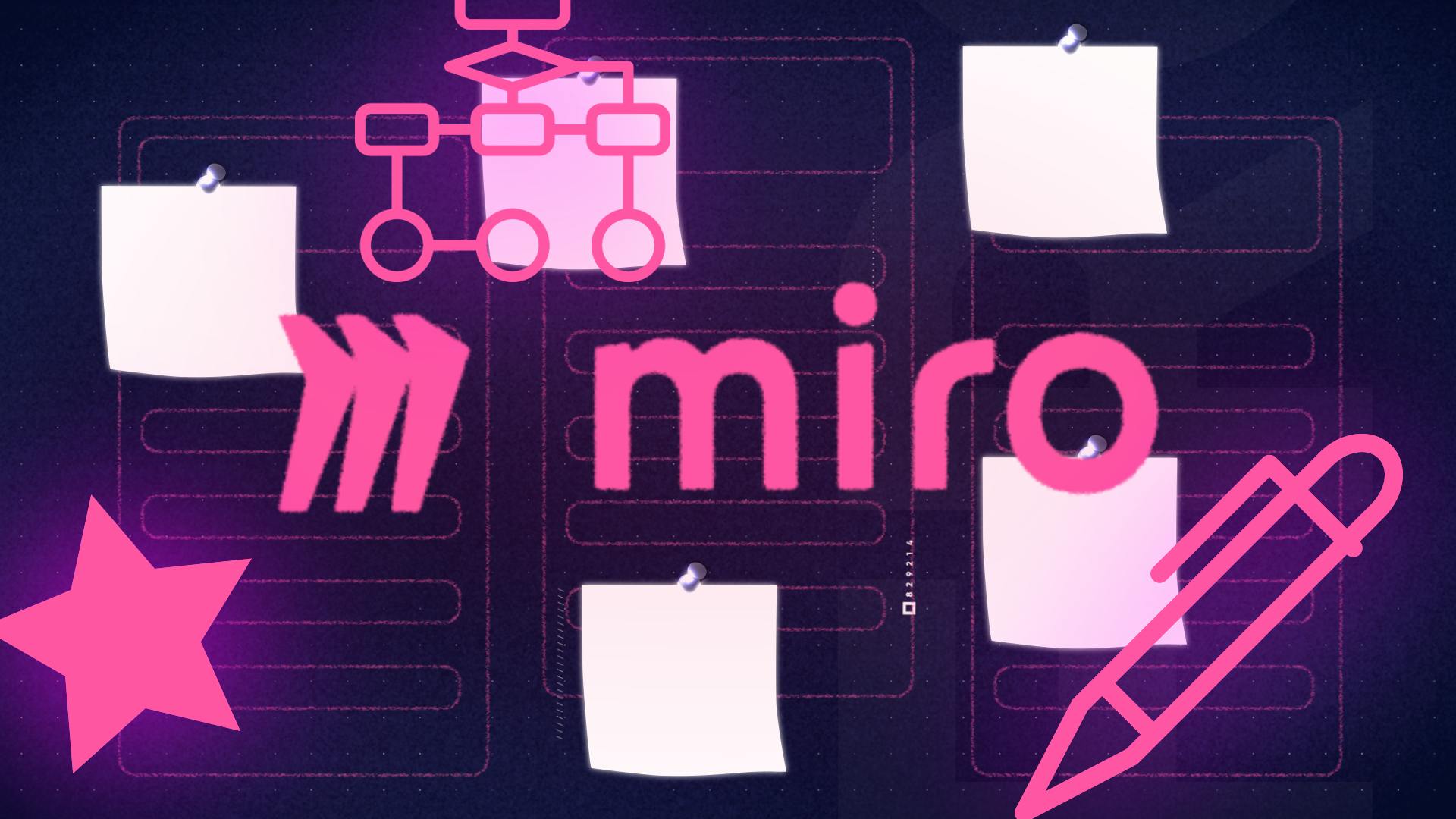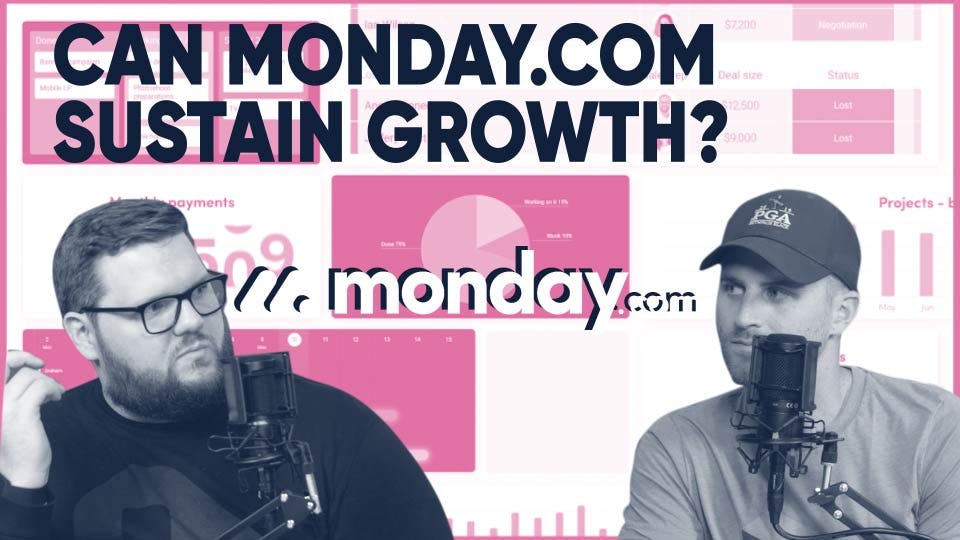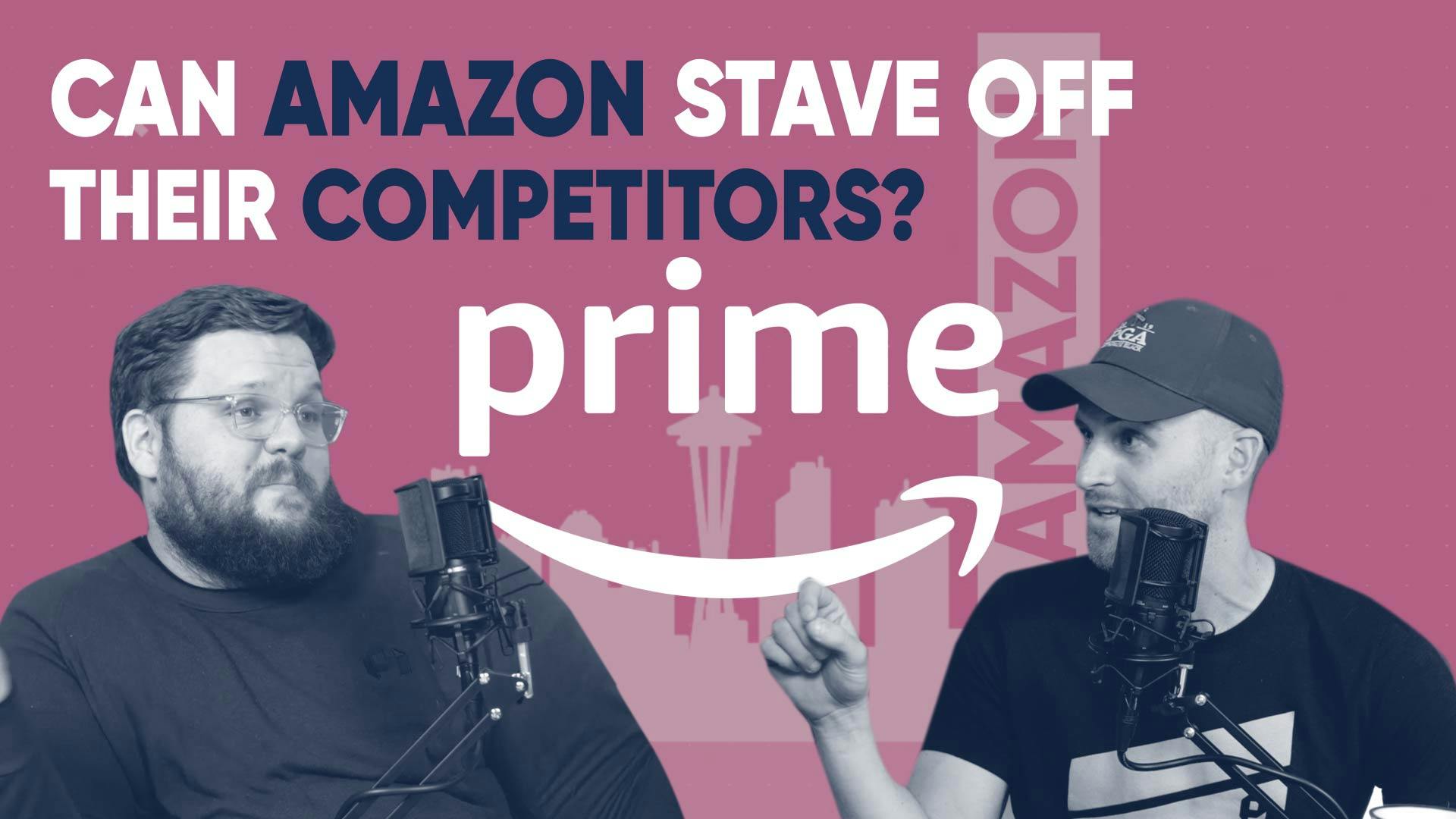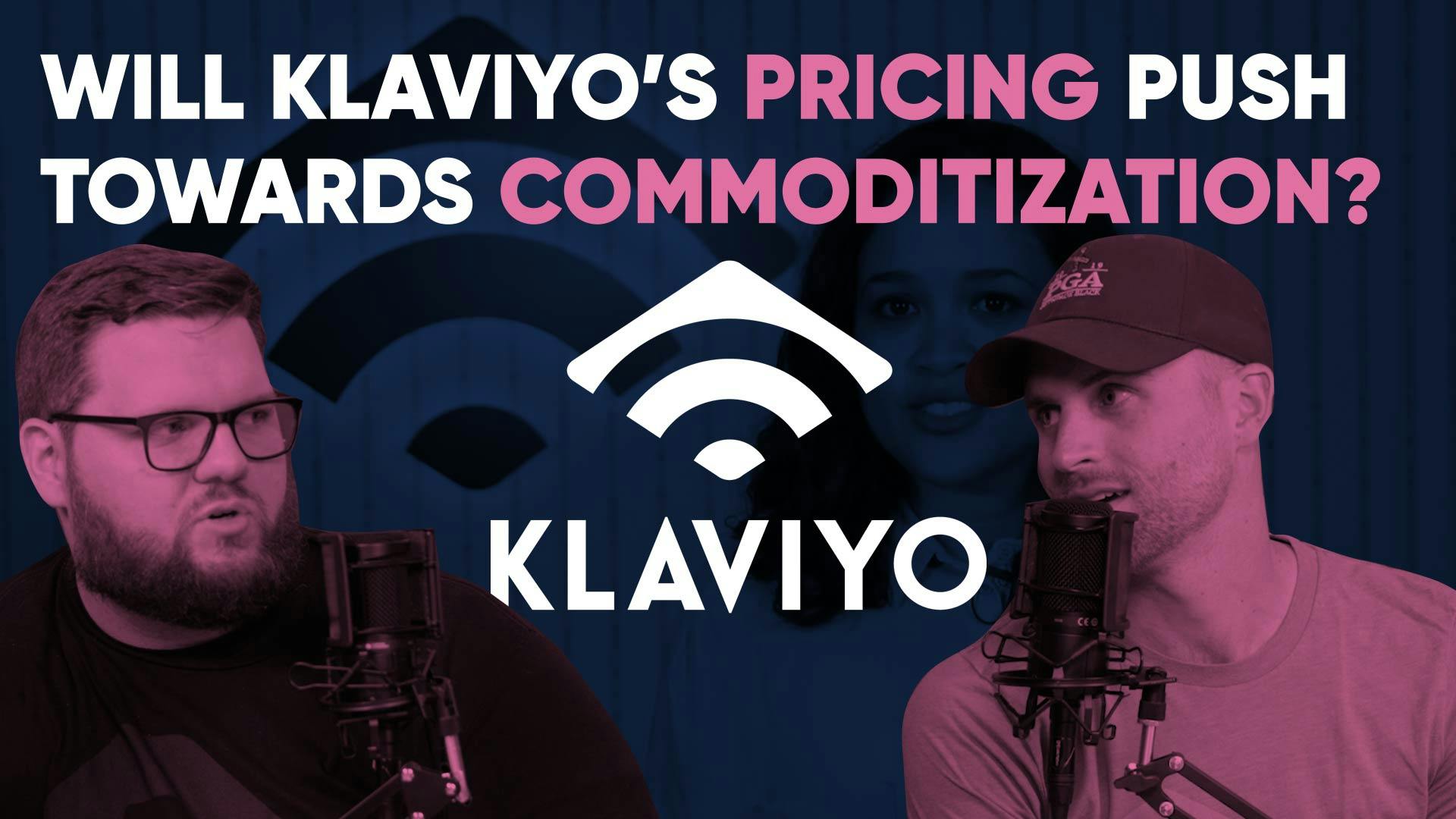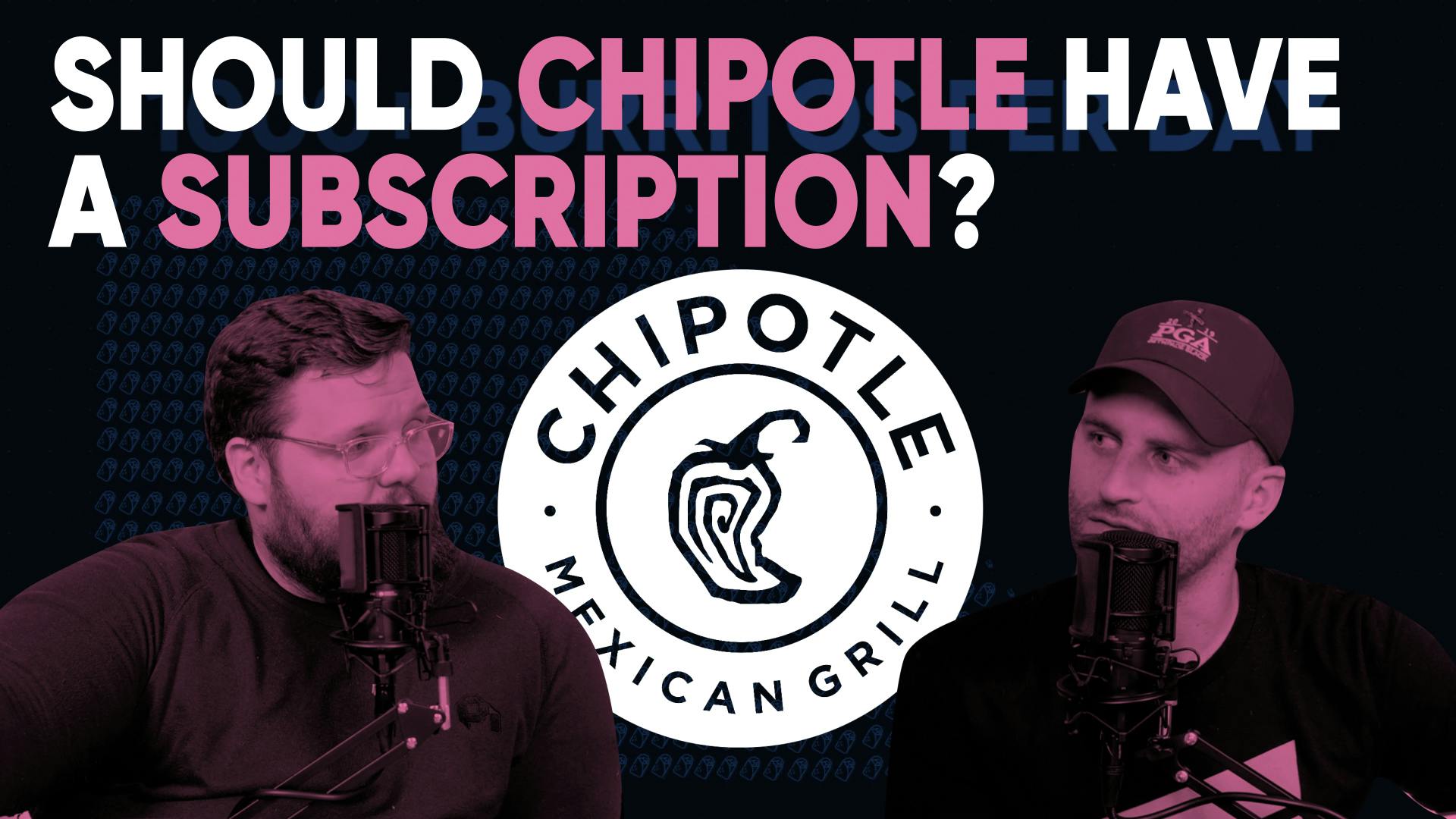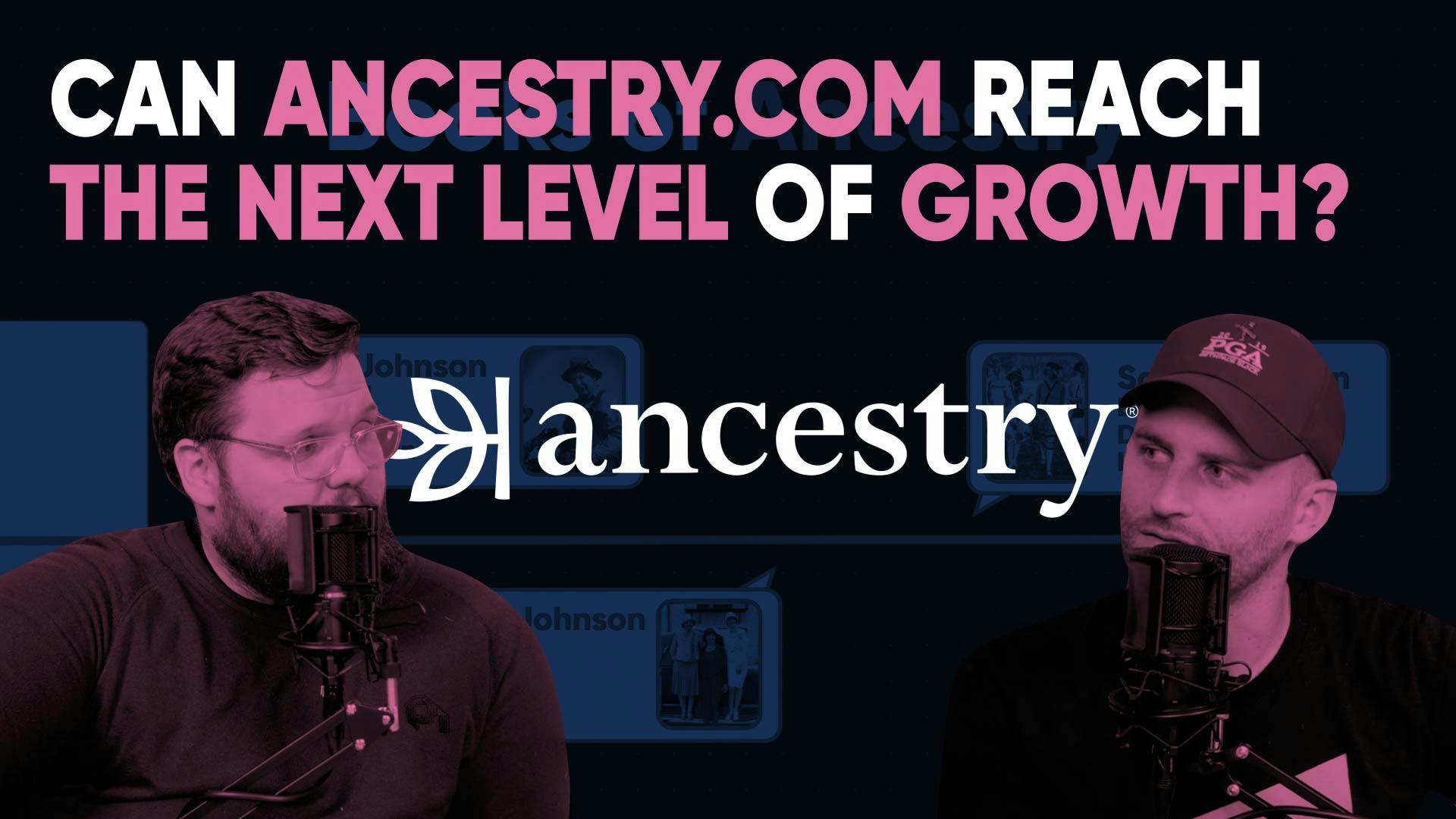
The Dropbox Identity Crisis
Overview of Dropbox
In the world of digital storage, Dropbox stands as a significant player, catering to a vast and diverse audience. From independent filmmakers storing extensive footage to accountants archiving copious data at law firms, Dropbox serves all. It's not without a hitch, though, as Dropbox faces significant challenges in its pricing strategy.
Background of Dropbox
Founded by MIT students Drew Houston and Arash Ferdowsi in 2007, Dropbox is a premier file hosting service. Born out of the frequent inconvenience of forgetting USB drives, the creators wanted to make files accessible regardless of location or device. The primary function of Dropbox revolves around cloud storage, file synchronization, personal cloud, and client software.

Dropbox allows users to create a unique folder on their computers, which it then synchronizes, enabling access to the same folder irrespective of the device. As competition grew in the cloud storage market, Dropbox maintained its distinctiveness by evolving into a user-friendly platform that integrates seamlessly with numerous applications.
Not just limiting itself to storage, Dropbox broadened its product portfolio with offerings like Dropbox Capture, Transfer, and Paper. Their acquisition of DocuSign in 2021 is further evidence of their continuous growth. However, with an expanding suite of products, Dropbox faces a pertinent question - Is it experiencing an identity crisis? Is their pricing strategy helping them stand out?

Reaction to Pricing Page
Dropbox showcases itself as a trustworthy platform, with over 700 million registered users. However, the presentation lacks a clear explanation of what it does. While it mentions terms like "easy to use", "reliable", "private", and "secure", the specifics about their services aren't evident. Though Dropbox is a widely recognized brand, it still needs to showcase its unique selling points and its diverse offerings more effectively.
It's evident that Dropbox faces an identity crisis. The services have grown, but the positioning seems muddled. With an array of features, it's challenging for users to discern the value proposition. Dropbox was once synonymous with freemium storage, but it no longer offers a freemium option, which could be a missed opportunity for customer acquisition.
Takeaways
Freemium
- Dropbox's initial success was largely attributed to its freemium model. The freemium strategy is more about customer acquisition than pricing. It's a powerful tool to draw new users into the ecosystem and eventually convert them into paying customers.
Identity Crisis
- As Dropbox added new features like sign, backup, capture, and more, it seems to be straddling a fine line between propping up its commoditized product and evolving with value-added services. This lack of clear identity could affect the company's long-term standing in a crowded market. The company Box, (shown below), has a strong identity.
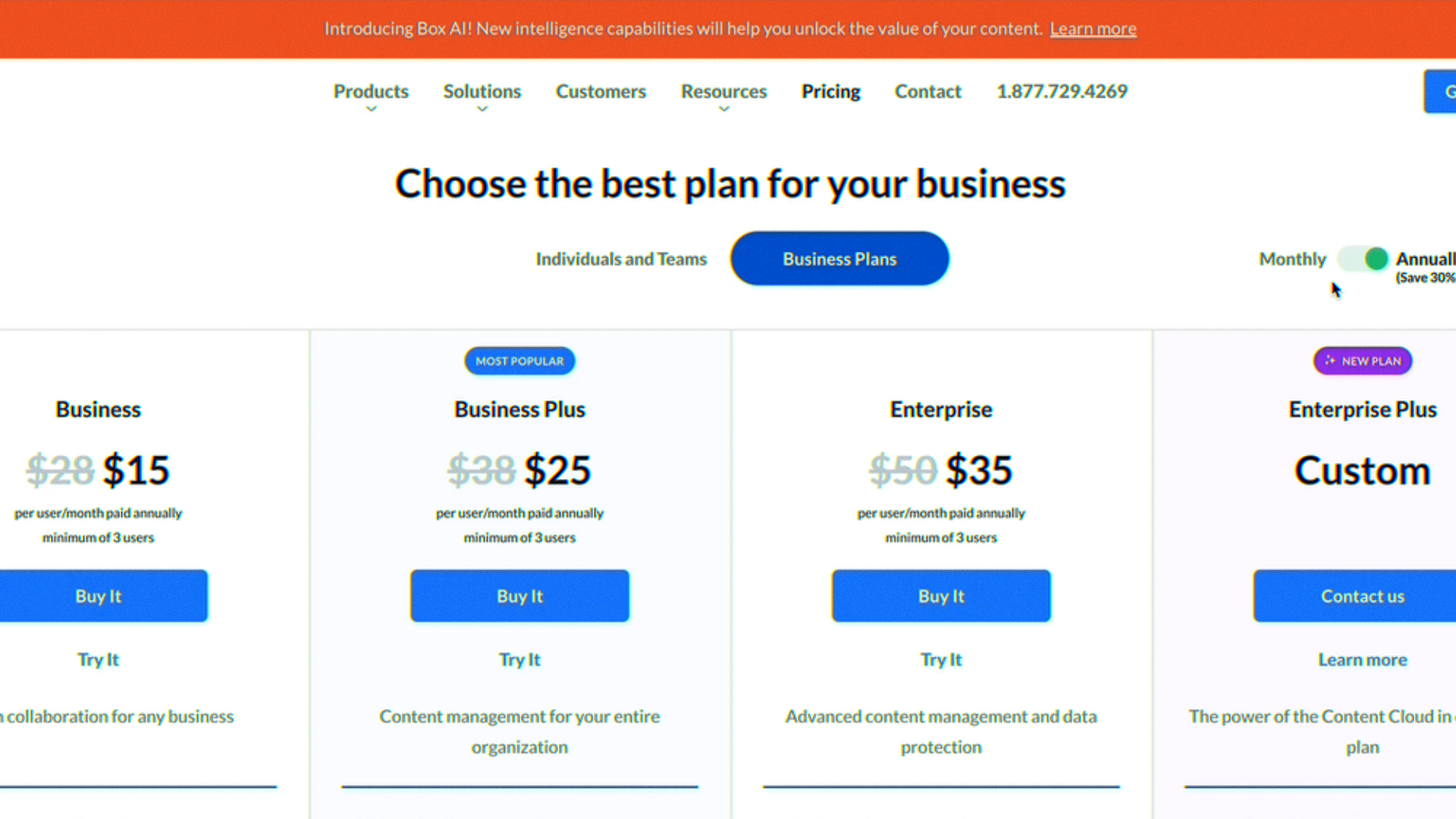
Plan Priming
- When customers visit Dropbox's pricing page, they face a confusing array of choices. Proper plan priming can help guide customers more effectively through their purchase decision. The pricing page could better segment the offerings into clearly defined categories, making it easier for customers to self-select the plan that suits their needs.

Localization
- Dropbox excels in its localization efforts. Users from different regions see the pricing in their local currency, enhancing the trust and ease of purchase. This is a lesson for all businesses, especially those with a diverse, global user base.
Recap
The company seems to be caught in an identity crisis, facing a tough choice between supporting its commoditized product and developing value-added services on top. The lack of clear plan priming can lead to confusion during the purchase process. However, Dropbox shines in its localization efforts, enabling a smooth purchasing process for global users.
Need help with your pricing?
Price Intelligently by Paddle is revolutionizing how SaaS and subscription companies price and package their products. Founded in 2012, we believe in value-based pricing rooted in first-party research to inform your monetization strategies. We combine expertise and data to solve your unique pricing challenges and catapult growth.
00:00:00:01 - 00:00:04:20
Patrick
Dropbox is probably going to remove this video from our account when they see what we're saying about their pricing.
00:00:04:22 - 00:00:18:07
Steve
Welcome to Pricing page tearDown where Paddles. Chief Strategy Officer Patrick Campbell breaks down what companies are doing well and not so well when it comes to their pricing strategy. Patrick, take it away.
00:00:18:09 - 00:00:37:01
Patrick
This week we're talking about Dropbox as the leader in file storage from anyone from an independent filmmaker to an accountant at a law firm. Fun fact our video team has 100 terabytes and growing worth of data on Dropbox. They are a powerhouse, but they're making a crucial error when it comes to their pricing strategy that you're probably making too.
00:00:37:02 - 00:00:44:17
Patrick
So before we get into that, though, Steve, tell us about Dropbox.
00:00:44:18 - 00:01:07:02
Steve
Dropbox, a leading file hosting service, was founded in 2007 by MIT students Drew Houston and Arash Ferdowsi. The two created drop boxes solution to frequently forgetting their USB drives. They envisioned a world where files could be available no matter where you were or what device you were using. The product's primary function is to offer cloud storage, file synchronization, personal cloud and client software.
00:01:07:04 - 00:01:30:03
Steve
Essentially, Dropbox allows users to create a special folder on their computers, which Dropbox then synchronizes, so it appears to the same folder. Regardless of the computer it is viewed. With the rise of competitors in the cloud storage market, Dropbox is differentiated itself by focusing on being a user friendly platform that integrates well with a large number of other applications, providing a seamless work experience for individuals and teams.
00:01:30:05 - 00:01:52:18
Steve
They've also added a number of new products, including Dropbox, capture, transfer and paper. And with the acquisition of DocuSign in 2021, they show no signs of slowing down. But with all their new products, is Dropbox facing identity crisis? Is their pricing helping them stand out from their competitors? All that and more coming up next.
00:01:52:19 - 00:02:10:16
Patrick
So let's first check out how they're positioning themselves joining over 700 million registered users who trust Dropbox. Lot of social proof there. The problem is not really talking about what they do. Easy to use reliable, private and secure. They don't even really talk about what they do. Could go either way here. I think one, they could talk a little bit about what they do, what the actual value prop is.
00:02:10:16 - 00:02:38:16
Patrick
But a lot of people just know what Dropbox is in general. But then lots of different information, more social proof. Oh, look at all these features. They have so many different things that they've acquired or built over the years. I would have liked to see more like stories like they have at the bottom of the page here, just to kind of bring this to life a little bit, allow their users to kind of see themself using the product, especially when you have something that's so commoditized now, like storage now would have been interesting to kind of check this out from there.
00:02:38:17 - 00:02:59:06
Patrick
This is where the story starts to begin, a little bit of what I'm calling the Dropbox identity crisis. But before I get into that one really, really big note that made Dropbox hugely successful. And so the first big point. Freemium was their gateway. They were one of the first companies out there.
00:02:59:08 - 00:03:17:04
Patrick
The biggest mistake people make with freemium plans is they think about them as, you know, kind of part of their pricing when really they're part of your acquisition. You want to think about them like a premium e-book. So let's get into a couple of other things.
00:03:17:04 - 00:03:45:01
Patrick
The biggest point I want to make about Dropbox right now, I feel like we're in the middle of an identity crisis that we are witnessing and it comes down to their value propositions. First, they weren't like Box who was going after kind of the market, the business market, right? And then had some individual folks. Now what Dropbox has done over the years kind of battle, the commoditization of the space is they've added things like sign, they bought docs and they have backup, they have capture for just recording videos and things like that.
00:03:45:07 - 00:04:04:04
Patrick
They have Dropbox paper where you basically have docs. But the issue that I see here with this identity crisis and you can see it right at the top of the pricing page is secure our cloud storage and so much more. All the encrypted storage you need includes Dropbox, transfer backup and e-signatures at no extra cost. This was a choice.
00:04:04:09 - 00:04:42:14
Patrick
I don't know if it was the right choice, though, because when you're in a commoditized market, you have a choice to either continue to try to prop up the commoditized product, which is what Dropbox is doing here, or you commoditize the heck out of the commodity and start building stuff on top of it. Box doesn't have this issue because they're so business focused, whereas Dropbox, because of what I imagine the profile of their customer base looks like, they've chosen to basically prop up the commodity that has some really serious implications over time because you just don't have enough power when you're looking at something like Dropbox, transfer backup and e-signatures that are super, super powerful
00:04:42:14 - 00:05:07:22
Patrick
products. But they're not necessarily getting their due because they're just bundled with everything else. A company that's done really, really well with this is Microsoft, right? They have the advantage where their commodity, which is basically docks so much further ahead than any of the competition because it's been worked on 30, 40 years at this point. Then all of a sudden they can start bundling all of these different things, but they're in office type bundles, meaning Dropbox is kind of in the middle.
00:05:07:22 - 00:05:27:15
Patrick
And I think this identity crisis needs to be solved of like who are they for, who they're going after, for them to continue to be successful even in this midst of this identity crisis they could use with better plan priming. When I come to this pricing page, even after I read this particular H1 and H2, all of a sudden I have this best value thing for individuals.
00:05:27:15 - 00:05:48:18
Patrick
But if I was a team standard for large teams advanced. Okay, cool. So I have this individual plan, a small team plan, and a large team plan. Okay, let me make my decision. Let me explore. Oh, there's a family plan. There's a professional plan, and then there's an okay, who am I? Right? And this is where better plan priming comes into place for individuals.
00:05:48:20 - 00:06:20:08
Patrick
Fantastic. That is step one. That is like the baseline that everyone should be doing. But then let's add a little bit for individuals looking for X and Y for small teams that need A and B, let's add a little bit and maybe even do with one of their competitors and Box does where if you go to their pricing page, you click individuals and teams and you just see the individuals and teams piece or the business plans and you just see the business plans, that's a better way to kind of prime this so that when I'm stepping through this, I am primed for where I'm going rather than being like, Cool, I'm for individuals.
00:06:20:08 - 00:06:38:12
Patrick
Oh wait, they have a family plan or a professional plan, right? I want to be primed as a user so I don't have to like, explore everything that I'm seeing on this particular website. Because one particular example here that took me a little while to figure out standard, if you looked at this plan feature page, you have professional being $20 a month, that standard being $18 per month.
00:06:38:13 - 00:06:59:00
Patrick
And I'm sitting here and I'm like, Well, standard. If I have all the features and I get more story, Oh, standard has a minimum of three users, right? So that's why that's a little bit cheaper. But it still was really, really confusing. Last point, a really positive point for Dropbox, something that we all can learn from, whether you're a consumer product or a B2B product price localization, what Dropbox does really, really well.
00:06:59:00 - 00:07:18:01
Patrick
We looked at this through a VPN or I'm a user that comes from Europe or Southeast Asia or Mexico or wherever I'm kind of coming from. I'm seeing the currency that I'm actually going to want to purchase in. So if I'm coming from the UK, I'm seeing the pound sterling. If I'm coming from Canada, I'm seeing the dollar, but it's Canadian dollars theoretically, but I'm seeing where I want to purchase.
00:07:18:01 - 00:07:37:14
Patrick
And this is super, super important because people want to purchase in the currency that they're used to. It's a trust element to a purchase and therefore Dropbox is getting a higher velocity of the users. All right. Just to recap a couple of things, but freemium.
00:07:37:14 - 00:08:04:07
Patrick
It's part of your acquisition. It's not part of your pricing. And all markets that get super, super commoditized, you eventually do get rid of or really limit freemium over time unless there's a bigger vision. And this brings me to the second point. I think Dropbox is going through an identity crisis here. When you have a commoditized product, you have a choice to just commoditize the heck out of a commodity, meaning make it go to zero, are really, really cheap and then build premium products on top of it or continue to prop up that commodity.
00:08:04:07 - 00:08:28:09
Patrick
And that's the choice that Dropbox made. Given the market. I'm not really sure that's the right choice. Better plan priming just makes sure that when I come to that pricing page, I understand where I should be flowing based on who I am. And let me self-select into it. It worst case, I'll explore a little bit if something seems out of whack, but one thing Dropbox could do better here is just get me through the door and get me directly where I need to go rather than confusing me with all of the other plans.
00:08:28:14 - 00:08:46:14
Patrick
And the final piece, Dropbox is amazing at their actual localization here. There's some tweaks that they could be making with that, but they're better than 99% of the companies there and they should be because they have. I think it was 700 million users. They have so many users that are obviously outside all kinds of places across the world, and they want to make sure they're taking advantage of that.
00:08:46:15 - 00:08:58:21
Patrick
That's it for this week's episode of Pricing Page TearDown. If you're Dropbox, a competitor or anyone else wanting some help with your own pricing strategy. Hit me up a PC panel that com for everyone else make sure you sign up and subscribe. We'll see you next week.

